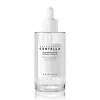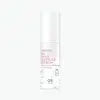What's inside
What's inside
 Key Ingredients
Key Ingredients

 Benefits
Benefits

 Concerns
Concerns

No concerns
 Ingredients Side-by-side
Ingredients Side-by-side

Water
Skin ConditioningButylene Glycol
HumectantNiacinamide
SmoothingGlycerin
HumectantTranexamic Acid
Astringent1,2-Hexanediol
Skin ConditioningBetaine
HumectantCentella Asiatica Extract
CleansingZea Mays Starch
AbsorbentXanthan Gum
EmulsifyingMicrocrystalline Cellulose
AbsorbentMannitol
HumectantPanthenol
Skin ConditioningPentylene Glycol
Skin ConditioningEthylhexylglycerin
Skin ConditioningHydroxyethylcellulose
Emulsion StabilisingMadecassoside
AntioxidantAcrylates/C10-30 Alkyl Acrylate Crosspolymer
Emulsion StabilisingArginine
MaskingHydrogenated Lecithin
EmulsifyingXylitylglucoside
HumectantAnhydroxylitol
HumectantXylitol
HumectantGlucose
Humectant3-O-Ethyl Ascorbic Acid
Skin ConditioningLactobacillus Ferment
Skin ConditioningWater, Butylene Glycol, Niacinamide, Glycerin, Tranexamic Acid, 1,2-Hexanediol, Betaine, Centella Asiatica Extract, Zea Mays Starch, Xanthan Gum, Microcrystalline Cellulose, Mannitol, Panthenol, Pentylene Glycol, Ethylhexylglycerin, Hydroxyethylcellulose, Madecassoside, Acrylates/C10-30 Alkyl Acrylate Crosspolymer, Arginine, Hydrogenated Lecithin, Xylitylglucoside, Anhydroxylitol, Xylitol, Glucose, 3-O-Ethyl Ascorbic Acid, Lactobacillus Ferment
Water
Skin ConditioningBis-PEG-18 Methyl Ether Dimethyl Silane
EmollientMethylpropanediol
SolventNiacinamide
SmoothingGlycerin
HumectantMilk Protein Extract
PEG-60 Hydrogenated Castor Oil
EmulsifyingTromethamine
BufferingButylene Glycol
HumectantAcrylates/C10-30 Alkyl Acrylate Crosspolymer
Emulsion StabilisingCarbomer
Emulsion StabilisingDecylene Glycol
Skin ConditioningHexylene Glycol
EmulsifyingEthylhexylglycerin
Skin Conditioning1,2-Hexanediol
Skin ConditioningBetaine
HumectantChondrus Crispus Powder
AbrasiveTotarol
AntioxidantParfum
MaskingAdenosine
Skin ConditioningDisodium EDTA
Allantoin
Skin ConditioningAgar
MaskingCI 77891
Cosmetic ColorantGellan Gum
Sodium Hyaluronate
HumectantRoyal Jelly Extract
Skin ConditioningRice Ferment Filtrate
Skin ConditioningHamamelis Virginiana Leaf Extract
Skin ConditioningGalactomyces Ferment Filtrate
HumectantFructan
Skin ConditioningBacillus/Soybean Ferment Extract
Skin ConditioningAnthemis Nobilis Flower Extract
MaskingLilium Candidum Bulb Extract
Skin ConditioningIris Versicolor Extract
EmollientFreesia Alba Flower Extract
Skin ConditioningRosa Damascena Flower Water
MaskingNelumbo Nucifera Flower Extract
Skin ConditioningNarcissus Pseudo-Narcissus Flower Extract
Skin ConditioningLeontopodium Alpinum Extract
Skin ConditioningJasminum Officinale Flower/Leaf Extract
MaskingSalvia Hispanica Seed Extract
EmollientOriganum Vulgare Leaf Extract
Skin ConditioningLinum Usitatissimum Seed Extract
PerfumingHibiscus Sabdariffa Flower Extract
Skin ConditioningHedera Helix Leaf Extract
Skin ConditioningEucalyptus Globulus Leaf Extract
PerfumingCamellia Sinensis Leaf Extract
AntimicrobialNelumbo Nucifera Flower Water
TonicPinus Sylvestris Leaf Extract
TonicRetinyl Palmitate
Skin ConditioningPrunus Amygdalus Dulcis Oil
Skin ConditioningMacadamia Ternifolia Seed Oil
EmollientBiotin
AntiseborrhoeicCeramide NP
Skin ConditioningHydrogenated Lecithin
EmulsifyingMaltodextrin
AbsorbentCalcium Pantothenate
Sodium Starch Octenylsuccinate
AbsorbentDipropylene Glycol
HumectantGlycereth-20
HumectantSodium Ascorbyl Phosphate
AntioxidantPEG-10 Rapeseed Sterol
CleansingGlyceryl Stearate
EmollientHydroxypropyl Cyclodextrin
MaskingTocopheryl Acetate
AntioxidantPyridoxine Hcl
Skin ConditioningGlutathione
Silica
AbrasiveWater, Bis-PEG-18 Methyl Ether Dimethyl Silane, Methylpropanediol, Niacinamide, Glycerin, Milk Protein Extract, PEG-60 Hydrogenated Castor Oil, Tromethamine, Butylene Glycol, Acrylates/C10-30 Alkyl Acrylate Crosspolymer, Carbomer, Decylene Glycol, Hexylene Glycol, Ethylhexylglycerin, 1,2-Hexanediol, Betaine, Chondrus Crispus Powder, Totarol, Parfum, Adenosine, Disodium EDTA, Allantoin, Agar, CI 77891, Gellan Gum, Sodium Hyaluronate, Royal Jelly Extract, Rice Ferment Filtrate, Hamamelis Virginiana Leaf Extract, Galactomyces Ferment Filtrate, Fructan, Bacillus/Soybean Ferment Extract, Anthemis Nobilis Flower Extract, Lilium Candidum Bulb Extract, Iris Versicolor Extract, Freesia Alba Flower Extract, Rosa Damascena Flower Water, Nelumbo Nucifera Flower Extract, Narcissus Pseudo-Narcissus Flower Extract, Leontopodium Alpinum Extract, Jasminum Officinale Flower/Leaf Extract, Salvia Hispanica Seed Extract, Origanum Vulgare Leaf Extract, Linum Usitatissimum Seed Extract, Hibiscus Sabdariffa Flower Extract, Hedera Helix Leaf Extract, Eucalyptus Globulus Leaf Extract, Camellia Sinensis Leaf Extract, Nelumbo Nucifera Flower Water, Pinus Sylvestris Leaf Extract, Retinyl Palmitate, Prunus Amygdalus Dulcis Oil, Macadamia Ternifolia Seed Oil, Biotin, Ceramide NP, Hydrogenated Lecithin, Maltodextrin, Calcium Pantothenate, Sodium Starch Octenylsuccinate, Dipropylene Glycol, Glycereth-20, Sodium Ascorbyl Phosphate, PEG-10 Rapeseed Sterol, Glyceryl Stearate, Hydroxypropyl Cyclodextrin, Tocopheryl Acetate, Pyridoxine Hcl, Glutathione, Silica
 Reviews
Reviews

Ingredients Explained
These ingredients are found in both products.
Ingredients higher up in an ingredient list are typically present in a larger amount.
1,2-Hexanediol is a synthetic liquid and another multi-functional powerhouse.
It is a:
- Humectant, drawing moisture into the skin
- Emollient, helping to soften skin
- Solvent, dispersing and stabilizing formulas
- Preservative booster, enhancing the antimicrobial activity of other preservatives
Acrylates/C10-30 Alkyl Acrylate Crosspolymer is a synthetic polymer. It is used to thicken and improve the texture of products. Due to its properties, it can prevent water and oil ingredients from separating.
Betaine is a common humectant (a substance that promotes retention of moisture). It's known to be gentle on the skin and can help balance hydration.
This ingredient is best for improving hydration and soothing irritated skin. Studies also show it helps even out skin tone.
Fun fact: Betaine is naturally created in the skin and body. The kind found within cosmetic products can be either plant-derived or synthetic.
Another name for betaine is trimethylglycine.
Learn more about BetaineButylene Glycol (or BG) is used within cosmetic products for a few different reasons:
Overall, Butylene Glycol is a safe and well-rounded ingredient that works well with other ingredients.
Though this ingredient works well with most skin types, some people with sensitive skin may experience a reaction such as allergic rashes, closed comedones, or itchiness.
Learn more about Butylene GlycolEthylhexylglycerin (we can't pronounce this either) is commonly used as a preservative and skin softener. It is derived from glyceryl.
You might see Ethylhexylglycerin often paired with other preservatives such as phenoxyethanol. Ethylhexylglycerin has been found to increase the effectiveness of these other preservatives.
Glycerin is already naturally found in your skin. It helps moisturize and protect your skin.
A study from 2016 found glycerin to be more effective as a humectant than AHAs and hyaluronic acid.
As a humectant, it helps the skin stay hydrated by pulling moisture to your skin. The low molecular weight of glycerin allows it to pull moisture into the deeper layers of your skin.
Hydrated skin improves your skin barrier; Your skin barrier helps protect against irritants and bacteria.
Glycerin has also been found to have antimicrobial and antiviral properties. Due to these properties, glycerin is often used in wound and burn treatments.
In cosmetics, glycerin is usually derived from plants such as soybean or palm. However, it can also be sourced from animals, such as tallow or animal fat.
This ingredient is organic, colorless, odorless, and non-toxic.
Glycerin is the name for this ingredient in American English. British English uses Glycerol/Glycerine.
Learn more about GlycerinHydrogenated Lecithin is created from the hydrogenation of lecithin (a group of phospholipids). Hydrogenation is a chemical reaction between hydrogen and another element.
This ingredient is an emollient and emulsifier. As an emollient, it helps soften skin by trapping moisture within. As an emulsifier, it prevents oil and water ingredients from separating.
Niacinamide is a multitasking form of vitamin B3 that strengthens the skin barrier, reduces pores and dark spots, regulates oil, and improves signs of aging.
And the best part? It's gentle and well-tolerated by most skin types, including sensitive and reactive skin.
You might have heard of "niacin flush", or the reddening of skin that causes itchiness. Niacinamide has not been found to cause this.
In very rare cases, some individuals may not be able to tolerate niacinamide at all or experience an allergic reaction to it.
If you are experiencing flaking, irritation, and dryness with this ingredient, be sure to double check all your products as this ingredient can be found in all categories of skincare.
When incorporating niacinamide into your routine, look out for concentration amounts. Typically, 5% niacinamide provides benefits such as fading dark spots. However, if you have sensitive skin, it is better to begin with a smaller concentration.
When you apply niacinamide to your skin, your body converts it into nicotinamide adenine dinucleotide (NAD). NAD is an essential coenzyme that is already found in your cells as "fuel" and powers countless biological processes.
In your skin, NAD helps repair cell damage, produce new healthy cells, support collagen production, strengthen the skin barrier, and fight environmental stressors (like UV and pollution).
Our natural NAD levels start to decline with age, leading to slower skin repair, visible aging, and a weaker skin barrier. By providing your skin niacinamide, you're recharging your skin's NAD levels. This leads to stronger, healthier, and younger looking skin.
Another name for vitamin B3 is nicotinamide. This vitamin is water-soluble and our bodies don't store it. We obtain Vitamin B3 from either food or skincare. Meat, fish, wheat, yeast, and leafy greens contain vitamin B3.
The type of niacinamide used in skincare is synthetically created.
Learn more about NiacinamideWater. It's the most common cosmetic ingredient of all. You'll usually see it at the top of ingredient lists, meaning that it makes up the largest part of the product.
So why is it so popular? Water most often acts as a solvent - this means that it helps dissolve other ingredients into the formulation.
You'll also recognize water as that liquid we all need to stay alive. If you see this, drink a glass of water. Stay hydrated!
Learn more about Water